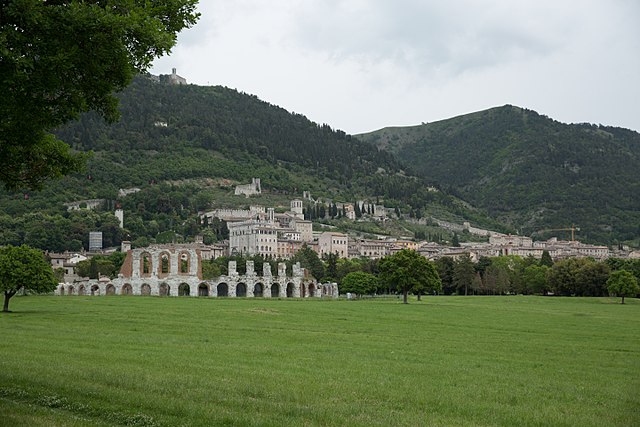The Iguvine Tablets, also known as the Eugubian Tablets or Eugubine Tables, are a series of seven bronze tablets from ancient Iguvium, Italy, written in the ancient Italic language Umbrian. The earliest tablets, written in the native Umbrian alphabet, were probably produced in the 3rd century BC, and the latest, written in the Latin alphabet, from the 1st century BC. The tablets contain religious inscriptions that memorialize the acts and rites of the Atiedian Brethren, a group of 12 priests of Jupiter with important municipal functions at Iguvium. The religious structure present in the tablets resembles that of the early stage of Roman religion, reflecting the Roman archaic triad and the group of gods more strictly related to Jupiter. Discovered in a farmer's field near Scheggia in the year 1444, they are currently housed in the Civic Museum of the Palazzo dei Consoli in Gubbio.
The seven Iguvine Tablets
Detail on one of the tablets.
Gubbio is an Italian town and comune in the far northeastern part of the Italian province of Perugia (Umbria). It is located on the lowest slope of Mt. Ingino, a small mountain of the Apennines.
Panorama of Gubbio
Gubbio maiolica by Giorgio Andreoli, famous for its lustro (reflections), 1525
Panorama of Gubbio from Viale Parruccini
A "porta dei morti" that has been turned into a window.






